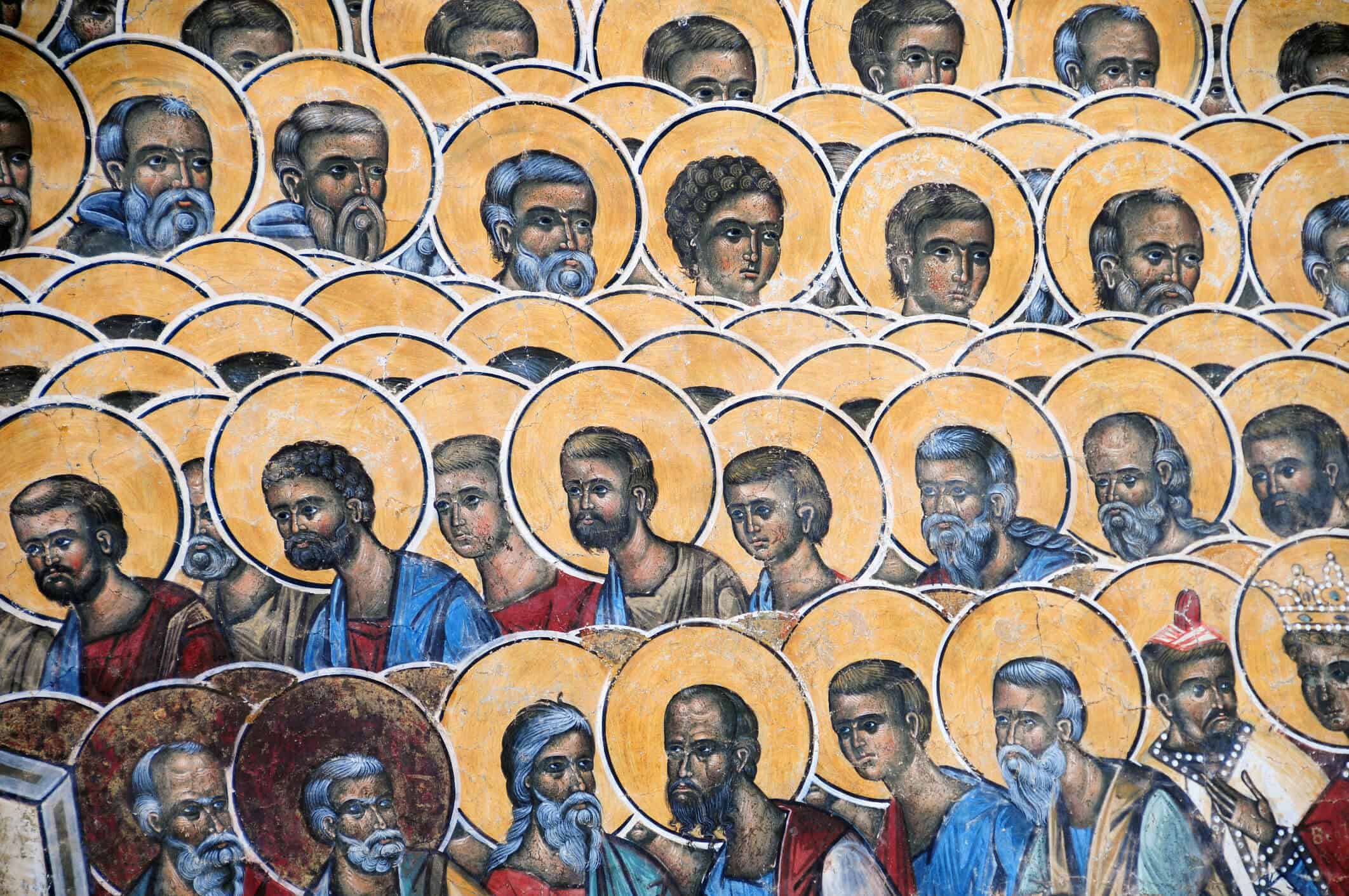January 4
St. Elizabeth Ann Seton
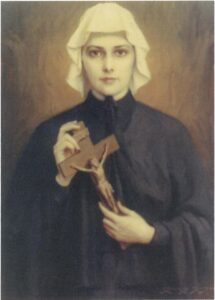
“I will go peaceably and firmly to the Catholic Church: for if Faith is so important to our salvation, I will seek it where true Faith first began, seek it among those who received it from God Himself.”
St. Elizabeth Ann Seton
Privileged daughter, New York socialite, devoted wife, loving mother, convert, catechist, educator, foundress, and tireless servant of God. – Elizabeth Ann Bayley Seton was the first native born American to be canonized by the Catholic Church.
She was born two years before the American Revolution, grew up in the society of upper class New York City, and married a wealthy importer, William Seton. Upon the failure of her husband’s business and his death from tuberculosis, she converted to Catholicism, alienating many of her Episcopalian friends and family. She established a religious community that became the first congregation of religious sisters to be founded in the United States, and its school was the first free Catholic school in America. This modest beginning marked the start of the Catholic parochial school system in the United States. The congregation was initially called the Sisters of Charity of St. Joseph’s; today, six separate religious congregations trace their roots to the beginnings of the Sisters of Charity in Emmitsburg, MD. By 1830, the Sisters were running orphanages and schools as far west as Cincinnati and New Orleans and had established the first hospital west of the Mississippi in St. Louis.
She died of tuberculosis on January 4, 1821, at the age of 46, five years after losing her youngest daughter to the same disease.
January 6
St. Andre Bessette
French-Canadian St. Andre Bessette (1845–1937) was born the eighth of twelve children to a poor working-class family in Quebec, Canada. He was weak and sickly from his birth. When he was nine, his father, a wood cutter, died in a lumber accident; when he was twelve, his mother died of tuberculosis. He was adopted by an uncle, who insisted he earn his keep, and Andre worked at various odd jobs as a farmhand, shoemaker, baker, blacksmith, and factory worker. He was sent to the Congregation of the Holy Cross in 1870 with a note from his pastor saying “I am sending you a saint”. He entered the teaching order without knowing how to read or write at age 25, serving as porter for Quebec’s Notre Dame College for 40 years. At the request of the Bishop of Montreal, he was ordained a priest.
Andre welcomed and prayed for the people he met, especially those who were ill or suffering. When an epidemic of sickness broke out, Andre demonstrated the gift of healing. He gave all the credit to St. Joseph, to whom he had a great devotion. When an epidemic broke out at a neighboring college, Andre volunteered to care for the victims, and not a single one died. Over the years, when word of his sanctity spread, tens of thousands of people came to Bessette for prayer and healing. He worked all day to receive them in person or answer their letters. When his Order wanted to purchase land on Mt. Royal, Bessette buried St. Joseph medals on the property. The owners yielded, the land was sold to the Order, and in 1904, he started building the St. Joseph Oratory on the property with nickels and dimes he had collected. It was completed in 1955 as a basilica.
When he died at the age of 91, it is said that a million people visited his coffin. He was buried in an alcove inside the crypt behind the Votive Chapel at Saint Joseph’s Oratory of Mount Royal. Millions of people were and still are, cured through his prayers and the intercession of St. Joseph. Today Saint Andre Bessette is known as the “Miracle Man of Montreal”.
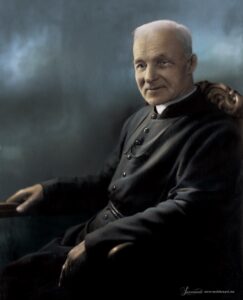
“When you invoke St. Joseph, you don’t have to say much. Say, ‘If you were in my place, St. Joseph, what would you do? Well, pray for this on my behalf.’ “
St. Andre Bessette
January 10
Blessed María Dolores Rodríguez Sopeña
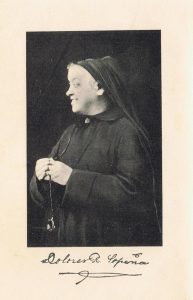
The fourth of seven children born to Tomas Rodríguez Sopeña, a lawyer, magistrate and administrator, and Nicolasa Ortega Salomon. Eye surgery at age eight left her with limited sight the rest of her life. A debutante at age 17, Maria did not care for the wordly life, and fearing that her parents would stop her, she secretly began working with the sick and poor. This was a time when a lady of her standing in society would never be found in the poor neighborhoods, never working with the poor herself. But Maria’s faith gave her endless confidence, and she was motivated by a desire to have “one family in Christ Jesus”
In 1868 when she was 20, Maria’s father was transferred to Puerto Rico where he eventually became a state attorney; the rest of the famly moved to Madrid, Spain. There Maria found a spiritual advisor and began catechizing women in prisons, hospitals and Sunday schools. The entire family moved to Puerto Rico in 1872 during a time of schism and religious disruption, and she found a Jesuit priest to be her spiritual director. Maria’s poor sight ended an attempt to join the Sisters of Charity, and when she tried to work on her own, the religious upheaval limited her to visiting only the sick in the safety of a military hospital. When the situation settled she founded the Centers of Instruction and the Association of the Sodality of the Virgin Mary who staffed the Centers. There they taught reading, writing and religion, and provided medical help where needed.
Maria’s mother died, her father retired, and the family returned to Madrid in 1877. Maria became the matriarch of the family, found a new spiritual advisor, and resumed her work with the poor and sick. Following the death of her father in 1883, she joined a Salesian convent. That lasted ten days; she realized that the cloistered, contemplative life was not for her.
In 1885 Maria opened a center where the poor could bring social problems to be resolved, and which was similar to a modern half-way house, helping prisoners return to society. The terrible conditions of the poor that she witness led to the formation of the organization Works of the Doctrines; due to anti-clerical attitudes in the 20th century, these became known as the Center for the Workers. In 1892 she founded the Association of the Apostolic Laymen (Sopeña Lay Movement), and in 1893 she received government approval to expand her work into eight poor and crowded Madrid neighborhoods.
In 1896 she began working throughout Spain, founding additional Works of the Doctrines. She made a pilgrimage to Rome in 1900, and received approval to form a religious institute to continue the work of the Works and Association. With eight companions and co-workers, she founded the Ladies of Catechistical Institute on 24 September 1901 in Toledo, Spain. She founded the Social and Cultural Work Sopeña (OSCUS) which received government approval in 1902, papal approval in 1907, and is today known as the Sopeña Catechetical Institute. Maria was chosen Superior General of community in 1910, and they expanded into the Americas in 1917. Her legacy continues today in the Sopeña Catechetical Institute, The Sopeña Lay Movement and the Sopeña Social and Cultural Work working in Spain, Italy, Argentina, Colombia, Cuba, Chile, Ecuador, Mexico and the Dominican Republic.
January 13
St Hilary of Poitiers
Saint Hilary was born into a wealthy, pagan family, and educated in philosophy and rhetoric. He “read” himself into the faith thru the Gospels, and he converted to Christianity with his wife and daughter. There he found the confirmation of the one true God and our purpose of life, eternity. He was elected Bishop after his conversion, only soon to be exiled by the Arians. This gave him time to research and write on the Trinity and the nature of God, refuting the Arian Heresy.
Some consider Hilary as the first Latin Christian hymn writer, because Jerome said Hilary produced a book of hymns.
“God the Word became flesh, that through His Incarnation our flesh might attain to union with God the Word. And lest we should think that this incarnate Word was some other than the Word of God, or that His flesh was of a body different from ours, He dwelt among us that by His dwelling He might be known as the indwelling God.”
St. Hilary of Poitiers
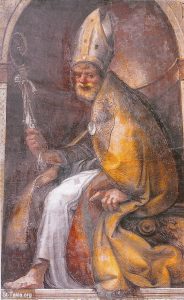
January 17
St. Anthony of the Desert
St. Anthony of the Desert (also known as St. Anthony the Abbot) was born around 251 AD. As a young man, Anthony was captivated by Jesus’s message, “Go, sell what you have, and give to [the] poor. ” Following the death of his parents when he was about 20, Anthony insured that his sister completed her education, then he sold his house, furniture, and the land he owned, gave the proceeds to the poor, and began a life of self-denial. At age 35 he moved to the desert to live alone.
Would-be students and admirers were drawn to him, and at age 54 he founded a monastery on the Nile. His example of modesty and courtesy led many to take up the monastic life, and to follow his unassuming ways. At 60, he hoped to be a martyr in the renewed Roman persecution of 311, fearlessly exposing himself to danger while giving moral and material support to those in prison. Famously, Anthony is said to have faced a series of supernatural temptations during his pilgrimage to the desert, enduring to his death at the age of 105.
“A time is coming when men will go mad, and when they see someone who is not mad, they will attack him saying, ‘You are mad, you are not like us.’“
St. Anthony of the Desert
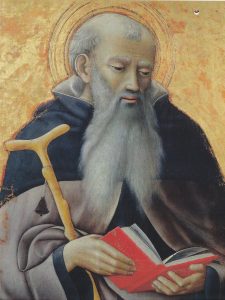
January 20
St. Sebastian
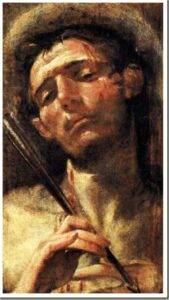
St. Sebastian (d. c. 288 A.D.) was born in Gaul, present-day France, to wealthy Italian parents. Educated in Milan, he eventually went to Rome to serve and encourage the Christians who were being persecuted under the Roman Emperor Diocletian. To do so effectively and without suspicion, he enrolled in the Roman army as an officer and eventually became one of the Praetorian Guard, who protected the Emperor.
In this position he did much to encourage the faith of the Christians in the face of brutal martyrdom, and in the process made many new converts through his gift of healing. According to tradition, Marcus and Marcellianus were twin brothers from a distinguished family and were deacons. The brothers refused to sacrifice to the Roman gods and were arrested. They were visited in prison by their parents, who tried to convince them to renounce Christianity. Sebastian succeeded in converting the parents as well as the local prefect, who then released all the Christian prisoners.
Once he was discovered to be a Christian, Sebastian was seized by Roman officers, and delivered to Mauritanian archers to be shot to death. His body was pierced with arrows, and he was left for dead. When the widow Irene of Rome went to recover his body, she discovered him still alive. She took him to her house and nursed him back to health.
One day he took up a position near where the emperor was to pass. He accosted the emperor, denouncing him for his cruelty to Christians. This time the sentence of death was carried out. Sebastian was beaten to death with clubs and his body was thrown into the sewers. It was recovered by a Christian woman, named Lucina, and she secretly buried him in the catacombs beneath Rome.
January 21
St. Agnes
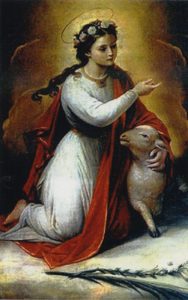
Almost nothing is known of this saint except that she was very young—12 or 13—when she was martyred in the last half of the third century. Agnes was said to be the foster-sister of another holy woman, Saint Emerentiana. Agnes was a beautiful girl whom many young men wanted to marry. Among those she refused, one reported her to the authorities for being a Christian. She was ordered to sacrifice to pagan gods and lose her virginity. Legend has it that she was confined to a house of prostitution so that she would be forced to lose her virginity. When one of the frequenters of the house looked upon her lustfully, he lost his sight but had it restored by her prayer. Agnes was condemned, executed, and buried near Rome in a catacomb that eventually was named after her.
To this day, two spotless lambs are blessed at her church in Rome, Italy on her feast day, and then their wool is woven into the palliums (bands of white wool) which the pope confers on archbishops as symbol of their jurisdiction.
“Christ has made my soul beautiful with the jewels of grace and virtue. I belong to Him Whom the Angels serve.”
St. Agnes of Rome
January 24
St. Francis de Sales
The son of an esteemed Savoyard family, Francis studied initially at Paris, attending the Collège de Clermont in Paris at age 12. His family had intended that he follow in his father’s footsteps, becoming a lawyer and eventually a senator from the province of Savoy. As a teen, he faced the fear of being predestined for eternal damnation; he instead threw himself on the mercy of God, frequently reciting the Memorare. After receiving his law degree and a degree in theology at the University of Padua, he braved his father’s displeasure to become a priest. He was sent on a mission to the Calvinists of the Chablais region, where his preaching did wonders. His gentle approach to evangelization led to his being called the “Gentle Christ of Geneva“.
At the age of thirty-five, Francis was made Bishop of Geneva, a mountainous diocese. He traveled incessantly, preaching sermons to awaken the tepid and drawing Protestants back to the Church. Despite his episcopal duties, he continued to hear confessions, write pamphlets explaining the Catholic faith, and catechize children in his diocese. His pamphlets, extensive correspondence on the faith, and his books are remembered today in his patronship of the Catholic press. He turned down a wealthy French bishopric to continue working where God had placed him.
Friend of both Saint Vincent de Paul and of Saint Jeanne de Chantal, he founded the Order of the Visitation with the latter in 1610. These women were to practice the virtues exemplified in Mary’s visit to Elizabeth: humility, piety, and mutual charity. They at first engaged to a limited degree in works of mercy for the poor and the sick. Today, while some communities conduct schools, others live a strictly contemplative life.
Francis strongly believed in the necessity for every person to practice holiness. “It is a mistake,” he wrote, “a heresy, to want to exclude devoutness of life from among soldiers, from shops and offices, from royal courts, from the homes of the married.”
In his Introduction to the Devout Life, a primer for lay persons, Francis counseled, “Remember the Heart of Jesus beheld your heart and loved it, even while he hung upon the Cross; and by that love he obtained for you all good things which you will ever possess…Well may we all say with the Prophet Jeremiah, ‘Before I formed you in the womb I knew you, before you were born I dedicated you’ )1:15).”
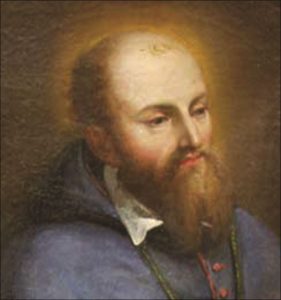
“Faith is like a bright ray of sunlight. It enables us to see God in all things, as well as, all things in God.”
St. Francis de Sales
January 25
Conversion of St. Paul
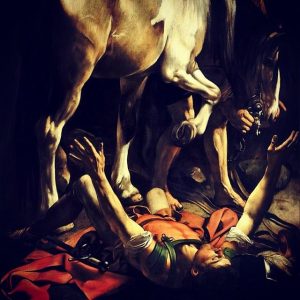
Saul of Tarsus (also known by his Greek name “Paul”) was a religious zealot, charged by the Jewish high priest with a mission to arrest followers of Jesus in Damascus, to bind them, and to bring them to Jerusalem for trial. His entire life was forged by his experience on his way to Damascus to make those arrests. He was stuck blind by a great light, from which emanated the accusation, “Saul, Saul, why do you persecute me?” He became a faithful follower of Jesus and supporter of his church. He became the great Apostle to the Gentiles, making three missionary journeys which brought him to the great centers of Asia Minor and southern Europe, and made many converts. He authored many of the books of the New Testament; in one of his letters to the early Christian community in Galatia, he summed up his life aspiration as, “God forbid that I should glory, save in the cross of our Lord Jesus Christ, by whom the world is crucified unto me, and I unto the world.”
January 28
St. Thomas Aquinas
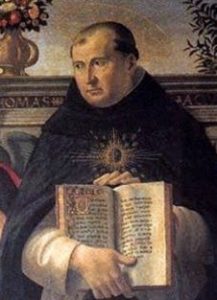
Thomas Aquinas was the son of the Count of Aquino, born in the family castle in Lombardy near Naples, Italy in 1225. He was one of the great teachers of the medieval Catholic Church, honored with the titles Doctor of the Church and Angelic Doctor.
He was groomed by his family to become the abbot of the great Benedictine monastery at Monte Cassino, but his life took a turn when he was at the University of Naples. He became attracted to the Dominican mendicant friars and secretly joined that order, much to his family’s dismay; he was imprisoned by them for a year to “deprogram” him. When released, he completed his studies under the learned St. Albert the Great, and, later in Naples, was first attracted to the philosophy of Aristotle.
At that time, Aristotle’s philosophy was being used to counter Catholic teaching, pitting Aristotelian philosophy against Catholic theology. To the dismay of both sides, Thomas maintained that philosophy and theology were mutually compatible, and he set out to defend the faith using that same philosophy. Thomas is most famous for his combining faith and reason, culmination in his Summa Theologiae, his last and, unfortunately, uncompleted work, deals with the whole of Catholic theology.
We must love them both, those whose opinions we share and those whose opinions we reject, for both have labored in the search for truth, and both have helped us in finding it.
St. Thomas Aquinas
January 31
St. John Bosco
Giovanni Melchior Bosco was born on 16 August 1815 at Becchi, Castelnuovo d’Asti, Piedmont, Italy. Son of Venerable Margherita Bosco. John’s father died when the boy was two years old. John attended church and became very devout. When he was not in church, he helped his family grow food and raise sheep; as soon as he was old enough to do odd jobs, John did so to help support his family. He would go to circuses, fairs and carnivals, practice the tricks that he saw magicians perform, and then put on one-boy shows. After his performance, while he still had an audience of boys, he would repeat the homily he had heard earlier that day in church.
When John was nine years old, he had the first of several vivid dreams that would influence his life. In his dream, he encountered a multitude of boys who swore as they played. Among these boys, he encountered a great, majestic man and woman. The man told him that in meekness and charity, he would “conquer these your friends.” Then a lady, also majestic said, “Be strong, humble and robust. When the time comes, you will understand everything.” This dream influenced John the rest of his life.
Encouraged during his youth in Turin to become a priest, he worked as a tailor, baker, shoemaker, and carpenter while attending college and seminary. John was ordained in 1841. His service to young people started when he met a poor orphan in Turin, and instructed him in preparation for receiving Holy Communion. He then gathered young apprentices and taught them catechism.
After serving as chaplain in a hospice for working girls, Don Bosco opened the Oratory of St. Francis de Sales for boys. Several wealthy and powerful patrons contributed money, enabling him to provide two workshops for the boys, shoemaking and tailoring.
By 1856, the institution had grown to 150 boys and had added a printing press for publication of religious and catechetical pamphlets. He wrote short treatises aimed at explaining the faith to children, and then taught children how to print them. and Union of Cooperator Salesians in 1875.John’s interest in vocational education and publishing justify him as patron of young apprentices and Catholic publishers.
John’s preaching fame spread and by 1850 he had trained his own helpers because of difficulties in retaining young priests. In 1854, he and his followers informally banded together, inspired by Saint Francis de Sales.
With Pope Pius IX’s encouragement, John gathered 17 men and founded the Salesians of Don Bosco (SDB) in 1859, priests who work with and educate boys, under the protection of Our Lady, Help of Christians, and Saint Francis de Sales.. Their activity concentrated on education and mission work. Later, in 1872, he organized a group of Salesian Sisters as the Daughters of Mary, Help of Christians to assist girls.
He died on 31 January 1888 at Turin, Italy of natural causes, and was canonized by Pope Pius XI in 1934
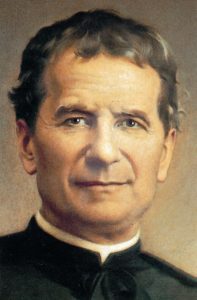
“Without confidence and love, there can be no true education. If you want to be loved…you must love yourselves, and make your children feel that you love them.”
St. John Bosco
